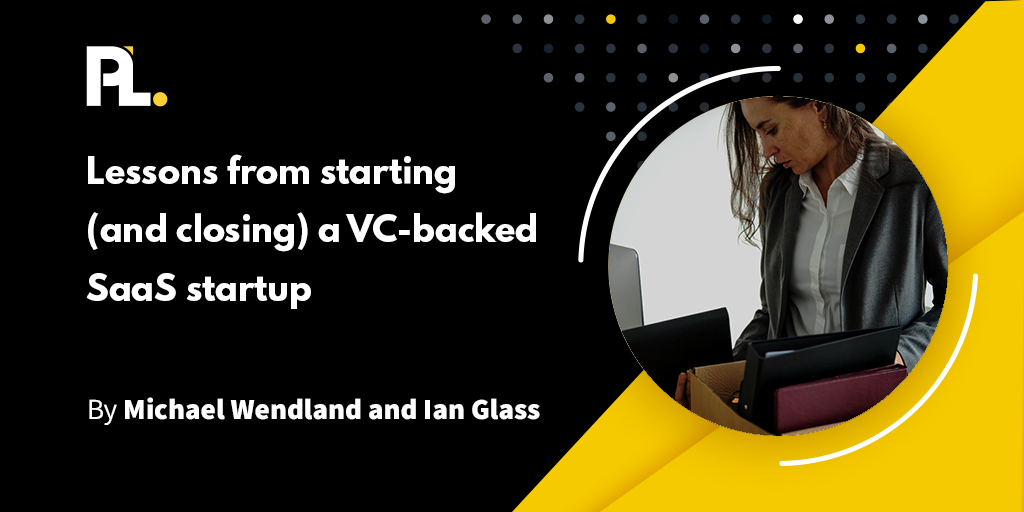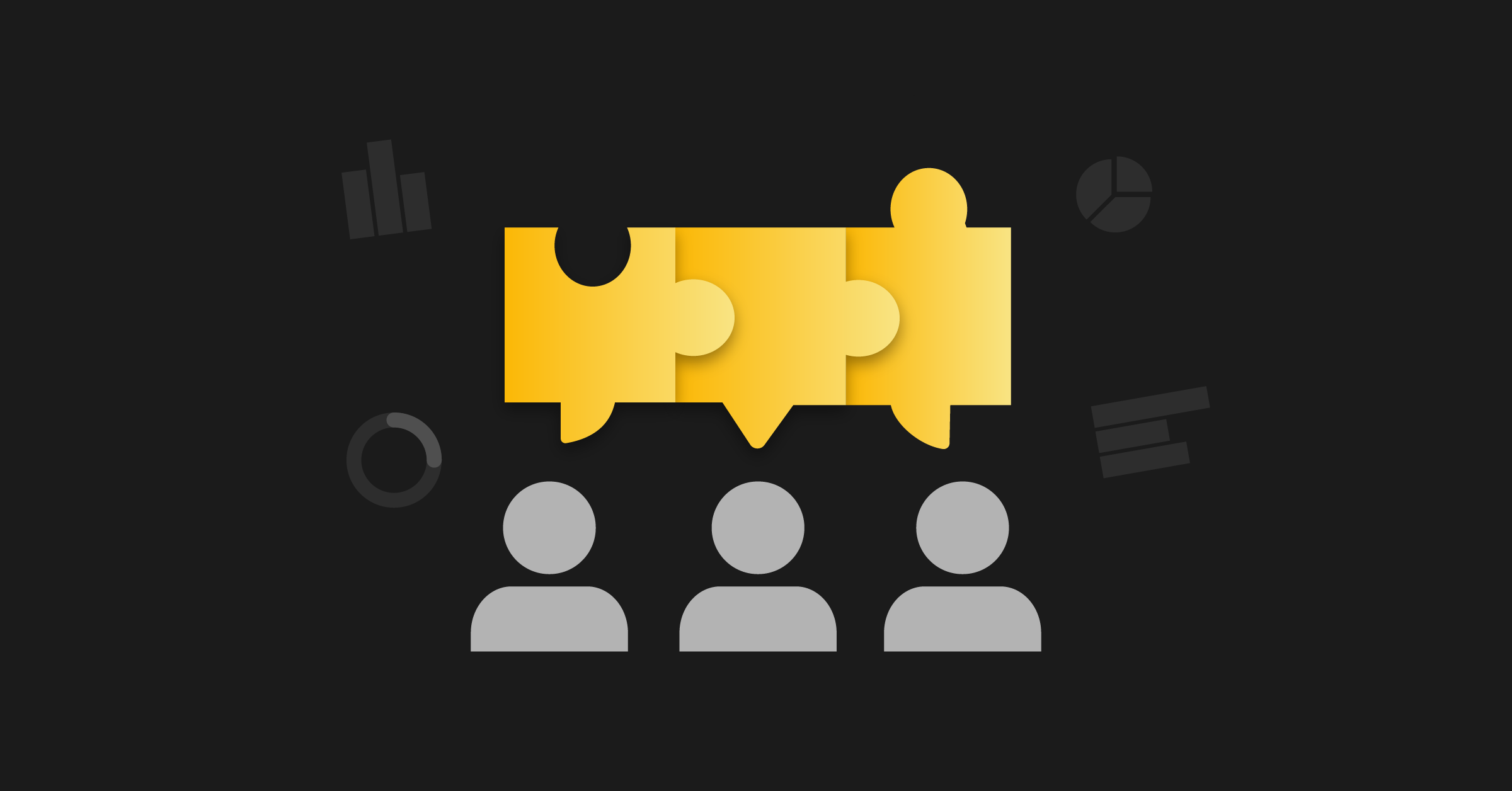
As an entrepreneur, you’re likely excited about how special your product is.
Perhaps you’re thinking about moving to a self-serve motion, but one question keeps lingering in the back of your mind…
Should you give away your product for free if you have a unique feature? It took you years to develop, and a competitor could swoop in and copy it in half the time.
The short answer is yes.
And I’ll explain why in this article.
You need more than one way of winning as a business
Now, it might be true that a competitor can swoop in and copy your product features in half the time.
But if you have a solid strategy in place, you might realize that your feature differentiation is actually just one potential way of winning as a business. If that's your only way of winning as a business, that’s a scary place.
Sure, having a differentiated feature set is amazing. But if you pair it with another type of moat, you will be extremely hard to copy.
So what exactly is a moat? Simply put, it’s how you win as a business. There is a limited belief out there that you should only have one moat for your business.
I’m here to debunk that theory. Because if you have multiple moats in place, you will have a long-term competitive advantage.
And that’s where the MOAT framework comes in.
It’ll help you choose two to three different moats for your business that will make it hard to copy.
The 14 different moats for your business
Now, there are countless ways to win as a business. But I’ve narrowed it down to 14 different ways you can win as a business.
- Differentiation Moat: Set your business apart from competitors by offering a unique product or service that fulfills customer needs in a distinctive and valuable way. This could involve innovative features, superior quality, exceptional customer service, or a combination of factors that make your offering stand out.
- Cost Leadership Moat: Become the low-cost provider in your industry while maintaining acceptable quality standards. Achieve cost advantages through economies of scale and efficient operations, which can create barriers for competitors. This advantage allows a company to offer products or services at a lower cost, making it challenging for others to compete.
- User & Customer Experience Moat: Create a seamless and intuitive user experience (UX) that can differentiate your solution from competitors. But extending that same level of thought and care throughout the customer’s journey creates an outstanding customer experience. Understanding your customer’s needs and preferences allows you to design seamless and personalized interactions, provide convenience and exceptional service, and build long-term loyalty.
- Network Effects Moat: Network effects occur when the value of a product or service increases as more people use it. Examples include social media platforms like Meta, where the more users there are, the more valuable the platform becomes for each user. You can always see network effects at companies like Webflow, WordPress, Miro, and Canva. They have an army of users who create templates for other users. As the platforms grow, the platform becomes more valuable over time and is hard to copy.
- Operational Efficiency Moat: Streamline your internal processes and optimize resource allocation to improve productivity and reduce costs. Efficient operations can lead to better profitability, faster delivery times, and improved customer satisfaction, giving you a competitive advantage.
- Branding and Reputation Moat: Build a strong brand that resonates with your target audience. Cultivate a positive reputation by consistently delivering on your promises, providing exceptional products or services, and actively engaging with your customers. A reputable brand can command customer loyalty, trust, and premium pricing.
- Distribution Moat: An extensive distribution network or exclusive access to key channels, strategic partnerships, and alliances can create barriers for competitors. It allows businesses to reach customers more effectively and control the availability of their products or services. Collaborating with strategic partners, suppliers, or complementary businesses can strengthen a company's position. Partnerships can provide access to new markets, distribution channels, technologies, or resources that would be challenging to obtain independently. Another great example of having a distribution moat is when your app is one of the first on the Shopify or iTunes app stores. You get the lion's share of the downloads because it’s a new platform, and over time, your app gains the most reviews and attention that is hard to replicate. We also benefitted from this in the early days of PLG. We were the pioneers in PLG and wrote a lot of great content on PLG before people were talking about it. Over time, we gained a ton of backlinks and authority around the topic, generating a lot of traffic that is hard for new entrants to copy.
- Speed and Innovation Moat: Being fast at innovation is one of the most underrated moats. It’s not the big that eat the small… It’s the fast that eats the slow. You can stand out quickly if you break into a stagnant industry with speed and innovation.
- Pricing Moat: A unique approach to SaaS monetization that aligns with your customer’s success could be a powerful way for your business to win. For instance, giving away your product for free but subsidizing your costs through sponsorships. Or only getting paid when your users get value by charging a percentage of each transaction. Whether it’s usage-based pricing or some other form that aligns with how customers gain value from your product. This can be hard to copy if paired with a customer success moat.
- Free Moat: Just having a free product experience for your users is a start in this direction, but you can take this even further by creating more free products that are subsidized by your core product(s). This can allow you to expand into adjacent markets and disrupt them by promoting your product for free to capture more potential users and demand for your other products. For example, ConvertKit, an email marketing tool, created a free landing page tool to make it easier for creators to capture signups. This allowed them to expand into an adjacent market and offer a disruptive free product.
- Switching Cost Moat: If a business can create high switching costs for customers, it becomes more challenging for them to switch to a competitor's product or service. This could be achieved through contractual obligations, integration with other systems, or data lock-in. Designing your software in a way that creates switching costs for customers, such as data migration or integration efforts, can reduce the likelihood of churn and make it harder for users to switch to competing solutions.
- Proprietary Process or IP Moat: Patents, trademarks, copyrights, and trade secrets can protect a company's intellectual property and provide a competitive advantage by preventing others from replicating or using proprietary technologies or brands. For instance, we developed The ProductLed GTM System™️ as our proprietary process to help software founders scale their self-serve revenue faster.
- Community and User Engagement Moat: Building a vibrant brand community and fostering active user engagement can create a loyal customer base and generate word-of-mouth marketing. Businesses that create a sense of belonging, encourage user-generated content and facilitate community interaction can develop a strong moat.
- Expansion Moat: The main way to ensure you can spend the most to acquire a customer is by making the most per customer in your industry. This could be because each customer you have eventually buys more than one product from you, or you have a revenue model and high customer loyalty that grows your customer’s lifetime value over time. HubSpot is a great example of winning with expansion. You can start with their free CRM and sales tools if you’re getting your first few customers. Then, when you have a good amount of contacts, you can start paying for their Marketing hub, and then when you have a Sales team, you can upgrade to their Sales hub. And then, when you have too many customers to deal with, you can upgrade to their Service hub. One small $50/month customer can eventually turn into one big $5,000/month customer over time.
You can learn more about creating a winning strategy here, where we go into each of these MOATs in more detail and help you choose your own.
Back to your unique feature.
Say you offer a super unique feature that fulfills a user’s need in a distinctive and valuable way. That’s a differentiation moat.
At some point, your competitors will find out about this differentiating factor. Whether they sign up for your product using a non-competitor email or they have a friend who uses your product.
It’s not a factor of if they are going to find it. It’s a matter of when.
So while you can have a highly differentiated feature that is amazing, that alone is not going to help you win.
How to make your business hard to copy
That’s why you should pick two to three moats that’ll help you win as a business. If you do it this way, you’re going to be hard to copy.
Let’s look at Southwest Airlines. They had a theory they could win a substantial part of the market by offering the lowest-cost tickets while also maintaining the lowest costs to run their airline business.
And it’s worked. Southwest Airlines now flies the most passenger seat miles in the United States.
Their moats are Cost Leadership and Operational Efficiency. These two moats complement each other perfectly as they reinforce each other when it comes to lowering costs while still making a profit because of your efficient operations.
So what I really want you to walk away with here is thinking about whether it is really necessary for you to keep your product hidden.
Having a differentiated feature is just one moat.
Successful companies deploy multiple moats to win.
If you keep your product hidden, you’ll likely lose out on a User and Customer Experience moat because you’re actively choosing to limit the number of people who experience your product – so you won’t be able to implement users’ feedback as fast.
This is going to hurt you in the long run because you won’t get enough users getting to value inside of your product to experience your differentiated feature. So you won’t be able to refine it.
So sure, it’s awesome that you have a differentiated feature.
That's one moat, and it's good to have that.
But find one or two others that will actually allow you to create a truly sustainable competitive advantage.
Remember, you shouldn’t have just one moat. You need multiple ones.
That’s how you’re going to create an unstoppable product-led business.






















